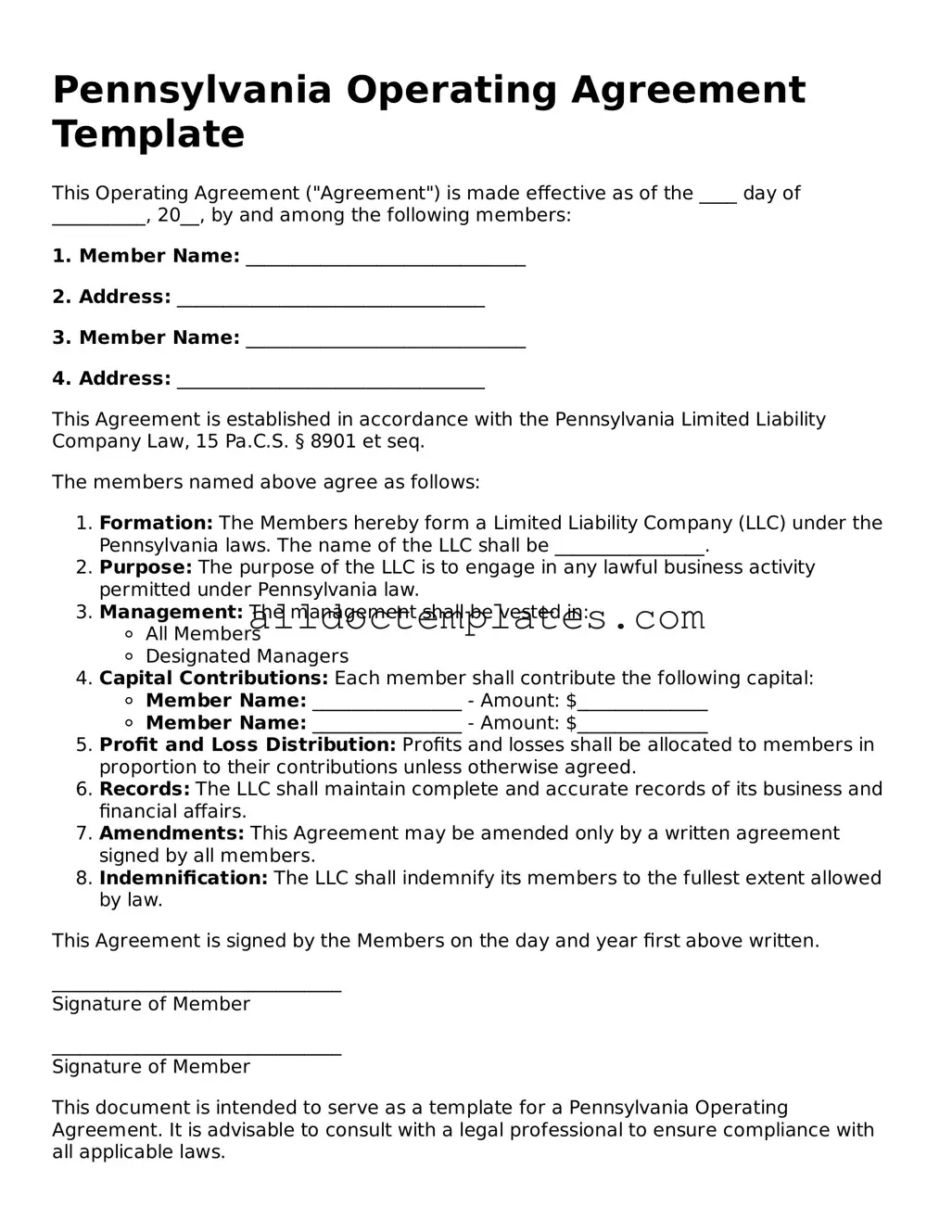Pennsylvania Operating Agreement Template
This Operating Agreement ("Agreement") is made effective as of the ____ day of __________, 20__, by and among the following members:
1. Member Name: ______________________________
2. Address: _________________________________
3. Member Name: ______________________________
4. Address: _________________________________
This Agreement is established in accordance with the Pennsylvania Limited Liability Company Law, 15 Pa.C.S. § 8901 et seq.
The members named above agree as follows:
- Formation: The Members hereby form a Limited Liability Company (LLC) under the Pennsylvania laws. The name of the LLC shall be ________________.
- Purpose: The purpose of the LLC is to engage in any lawful business activity permitted under Pennsylvania law.
- Management: The management shall be vested in:
- All Members
- Designated Managers
- Capital Contributions: Each member shall contribute the following capital:
- Member Name: ________________ - Amount: $______________
- Member Name: ________________ - Amount: $______________
- Profit and Loss Distribution: Profits and losses shall be allocated to members in proportion to their contributions unless otherwise agreed.
- Records: The LLC shall maintain complete and accurate records of its business and financial affairs.
- Amendments: This Agreement may be amended only by a written agreement signed by all members.
- Indemnification: The LLC shall indemnify its members to the fullest extent allowed by law.
This Agreement is signed by the Members on the day and year first above written.
_______________________________
Signature of Member
_______________________________
Signature of Member
This document is intended to serve as a template for a Pennsylvania Operating Agreement. It is advisable to consult with a legal professional to ensure compliance with all applicable laws.
